Models of Inflammatory Bowel Disease (IBD)
Inflammatory bowel diseases (IBDs) are a group of inflammatory disorders of the colon and small intestine characterized by inflammatory cell infiltrate and variable degrees of intestinal injury, including Crohn’s disease (CD) and ulcerative colitis (UC). Greentech Bioscience offers validated DSS-induced IBD model and TNBS-induced IBD model in mice or rats for preclinical drug efficacy testing. While TNBS induced colitis promotes a Th1 response, resembling Crohn’s disease in humans, DSS induced colitis models promotes a Th2 response, resembling ulcerative colitis in humans.
Our Models of Inflammatory Bowel Disease
1. DSS Induced IBD Model
The dextran sulfate sodium (DSS) induced colitis model is the most widely used IBD model due to simplicity, reproducibility and controllability. The DSS colitis model is induced by administration of DSS added to drinking water, resulting in epithelial cell injury and indirectly leading to intestinal inflammation. The acute and chronic DSS colitis model can be achieved with variable concentrations of DSS and the frequency of administration.
Induction: 3% DSS added to drinking water
Model Characteristics: DSS induced colitis model has increased expression of inflammatory cytokines related to colon injury accompanied by weight loss, bloody diarrhea, shortening of the colon, and inflammatory cell infiltrates in mucosa and submucosa.
2. TNBS Induced IBD Model
2,4,6-trinitrobenzene sulfonic acid (TNBS) in 50% ethanol enema induces colitis in rodents. In the TNBS induced colitis model, ethanol first breaks the mucosal barrier, and consequently, TNBS penetrates into the bowel wall and covalently binds to self-peptides to stimulates a delayed hypersensitivity response. The TNBS induced colitis model is generally accepted as one of the best experimental models for preclinical study of novel therapies against IBD-associated symptoms.
Induction: TNBS in 50% ethanol enema
Model Characteristics: Colonic tissues from the TNBS induced colitis model shows mucosa edema, myometria thickening, glandular and goblet cell disappearing, and immune cell infiltration, accompanied by severe diarrhea, weight loss, and rectal prolapse.
Animal Species
Mice, Rats
Clinical Assessment
(1) Clinical observations: body weight, water intake, fecal appearance and fecal occult blood test
(2) Disease activity index (DAI) scores
(3) Colon length, organ weight
(4) MPO activity measurement
(5) ELISA: serum TNF-α, IL-6, IL-8, IL-1β
(6) Histopathology: H&E staining.
Case Study
1. DSS induced ulcerative colitis model
Induction: 3% DSS was added to drinking water for 7 days. After 4-day induction, mice exhibited significant UC symptoms, and DAI score reached a peak at 8th day.
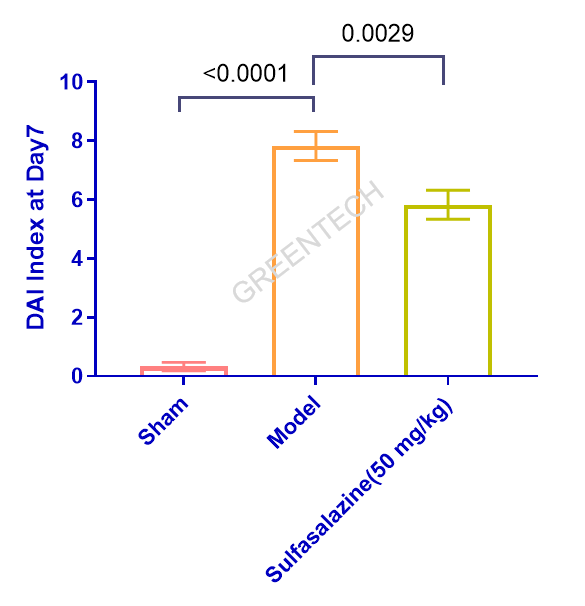
Figure1. DAI scores at Day 7.
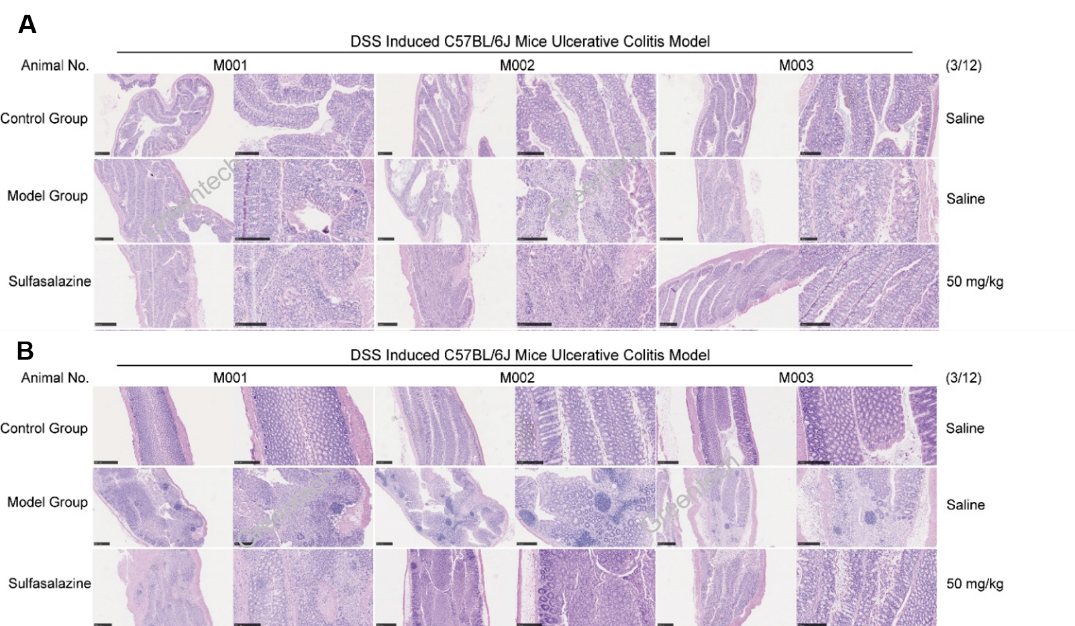
Figure 2. Colon section staining of DSS induced ulcerative colitis model in mice (H&E staining).
2. TNBS induced colitis model
Induction: Male SD rats, 4-6 week-old, one 100 mg/kg TNBS in 50% ethanol enema
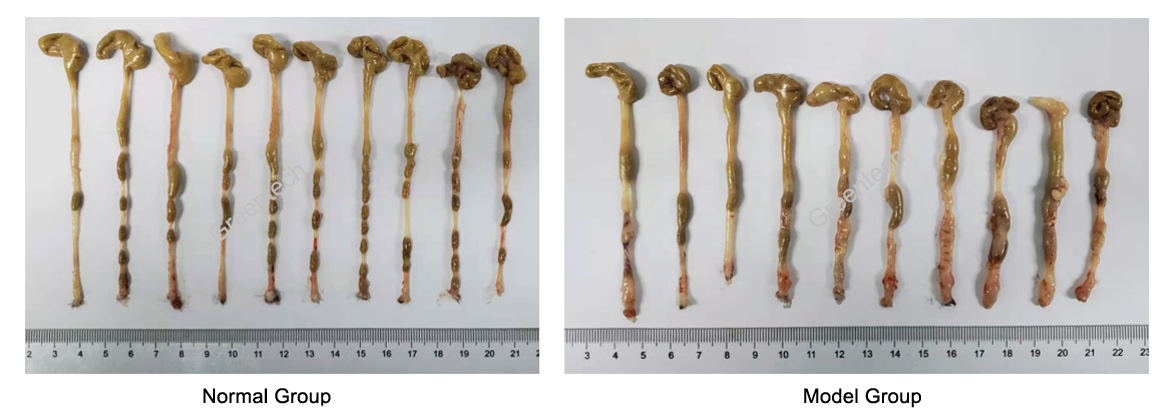
Figure 3. Appearance of intestines in TNBS induced colitis in rats.
Induction: Twice 100 mg/kg TNBS in 50% ethanol enema to successfully induce rat intestinal fibrosis.
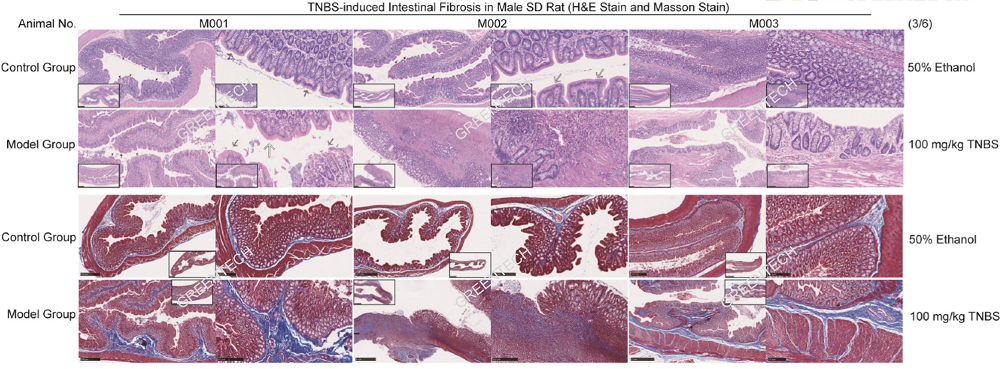
Figure 4. TNBS induced intestinal fibrosis in rats (H&E and Masson staining).
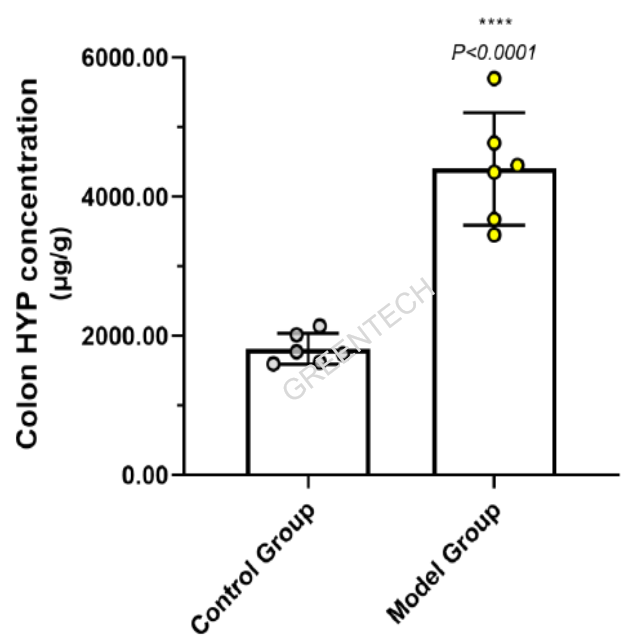
Figure 5. HYP concentrations of colons in TNBS induced IBD rats.
Inquiries
Request a quote now, or email us at BD@greentech-bio.com to inquire about our services or obtain a quote for your project.
References
1. John T Chang. Pathophysiology of Inflammatory Bowel Diseases. N Engl J Med. 2020 Dec 31;383(27):2652-2664.
2. Soontararak S, et al. Mesenchymal Stem Cells (MSC) Derived from Induced Pluripotent Stem Cells (iPSC) Equivalent to Adipose-Derived MSC in Promoting Intestinal Healing and Microbiome Normalization in Mouse Inflammatory Bowel Disease Model.Stem Cells Transl Med,2018,6:456-467.
3. Eichele DD, Kharbanda KK. Dextran sodium sulfate colitis murine model: An indispensable tool for advancing our understanding of inflammatory bowel diseases pathogenesis. World J Gastroenterol,2017,33:6016-6029.
4. Oh SY, et al. Comparison of experimental mouse models of inflammatory bowel disease. Int J Mol Med,2014,2:333-40.
5. Silva I,Pinto R,Mateus V.Preclinical Study in Vivo for New Pharmacological Approaches in Inflammatory Bowel Disease: A Systematic Review of Chronic Model of TNBS-Induced Colitis.J Clin Med,2019,10.











